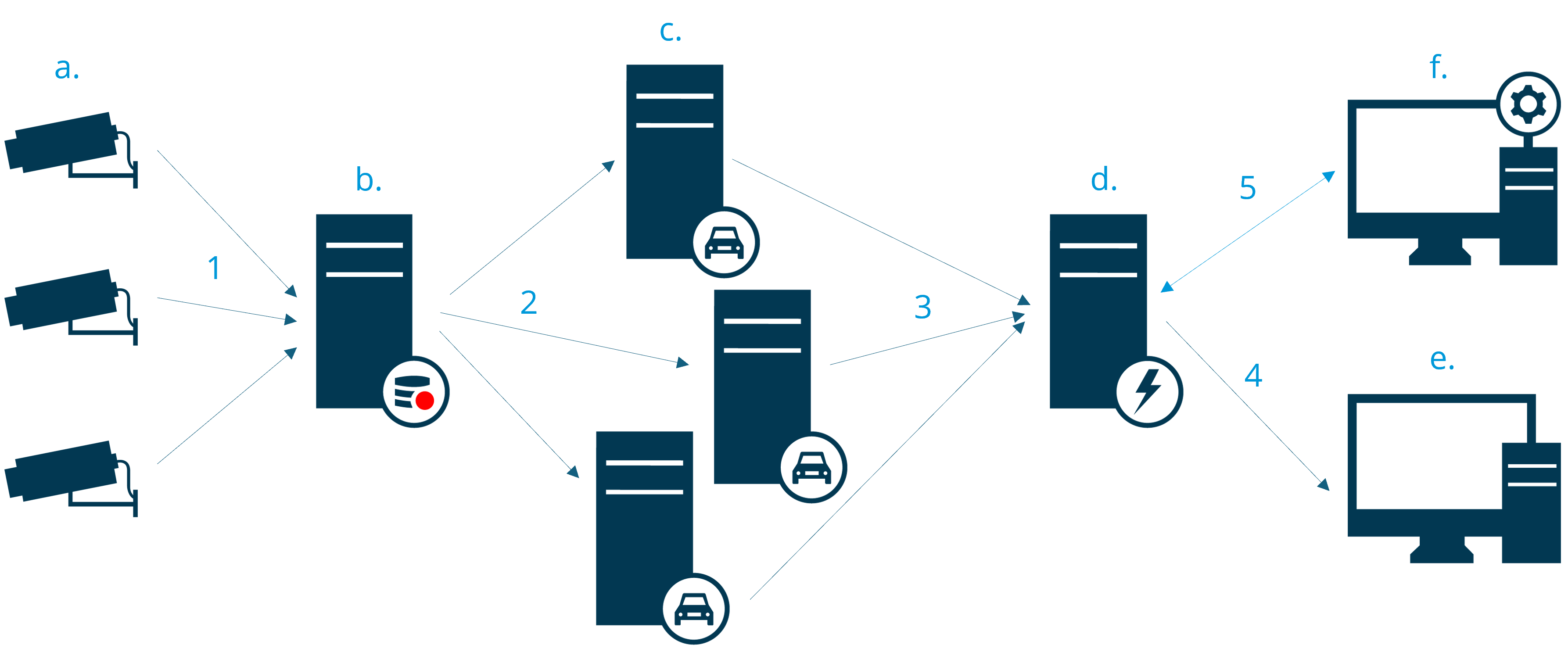XProtect LPR system architecture
Basic data flow:
- LPR cameras (a) send video to the recording server (b).
- The recording server sends video to the LPR servers (c) to recognize license plates by comparing them with the license plate styles in the installed country modules.
- LPR servers send recognitions to the event server (d) to match with the match lists.
- The event server sends events and alarms to XProtect Smart Client (e) when there is a match.
- The system administrator manages the entire LPR configuration, for example, setting up events, alarms, and lists in the Management Client (f).
LPR server
The LPR server handles LPR video recorded by your surveillance system. It analyzes the video and sends information to the event server. The event server uses the information to trigger the defined events and alarms. Milestone recommends that you install the LPR server on a computer especially allocated for this purpose.
LPR camera
The LPR camera captures video as any other camera, but some cameras are dedicated for LPR use. The better suited camera you use, the more successful recognitions you will get.
Country module
A country module is a set of rules that defines which license plates of a certain type and form belong to which country, state, or region. See how to enable country modules Country modules tab.
License plate styles
Every country module contains license plate styles. When you enable a country module, all the license plate styles that belong to that country module are also enabled.
A license plate style is a set of characteristics of a license plate, including the:
-
Plate size and shape
-
Text format and font
-
Colors
-
Type of vehicle that the license plate is used on
See a list of all license plate styles supported by XProtect LPR.
Match list
A match list is a list that you create. It's a collection of license plate registration numbers and license plate style aliases that you want your system to treat in a special way. After you create a match list, you can set up events to recognize license plates on these lists. The events will trigger events and alarms. See Match lists.


